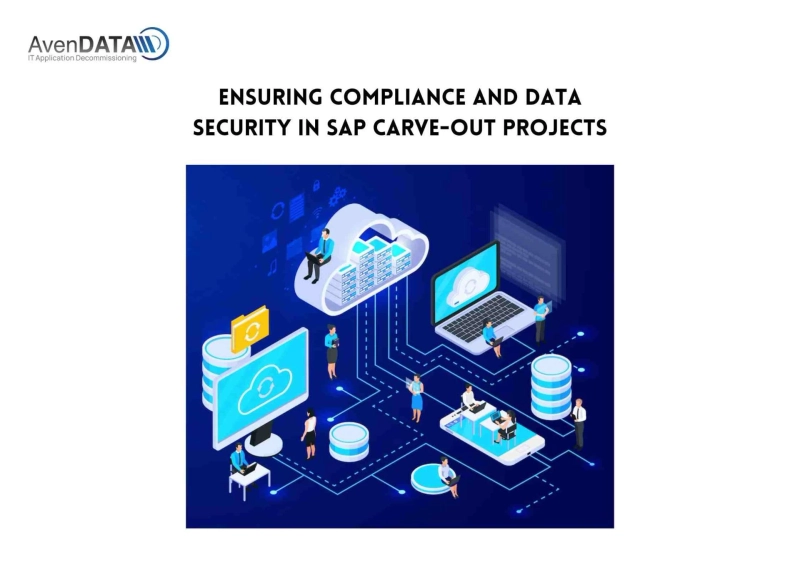Introduction
SAP carve-out projects are complex endeavors that involve extracting specific data segments from an existing system to create independent entities. While carve-outs offer numerous benefits, they also present significant challenges concerning data compliance and security. Ensuring that data remains protected and compliant during and after the carve-out is crucial to avoid potential legal, financial, and reputational risks. In this blog, we will explore key strategies and best practices to uphold compliance and data security in SAP carve-out projects.
1. Understanding Data Compliance Requirements
Compliance with data protection regulations is a top priority for organizations undertaking carve-out projects. Depending on the industry and region, companies may be subject to various data privacy laws such as the EU’s General Data Protection Regulation (GDPR), the California Consumer Privacy Act (CCPA), or sector-specific regulations. It is essential to have a thorough understanding of these requirements and how they apply to the carve-out process.
2. Conducting a Data Audit
Before commencing the carve-out, perform a comprehensive data audit to identify sensitive and personal data that requires special protection. Classify data based on its confidentiality and sensitivity levels, allowing you to prioritize security measures accordingly. This audit will serve as a foundation for your data protection strategy.
3. Implementing Data Anonymization and Masking
To protect sensitive data, consider anonymizing or masking it during the carve-out process. Anonymization involves removing personally identifiable information (PII) from datasets, while data masking replaces original sensitive values with fictitious but realistic ones. This ensures that test and development environments do not contain real customer or employee data, reducing the risk of unauthorized access or data breaches.
4. Enforcing Role-Based Access Controls (RBAC)
Incorporate robust Role-Based Access Controls (RBAC) to manage data access within the new entities created post-carve-out. Restrict access based on employees’ roles and responsibilities to minimize the risk of data misuse. Regularly review and update access permissions to adapt to changing organizational structures and personnel.
5. Data Encryption and Secure Transmission
Ensure data security during transmission between systems by using encryption protocols. Encrypting data safeguards it from unauthorized interception and ensures that only authorized parties can access the information.
6. Establishing Data Retention Policies
Incorporate data retention policies to determine how long specific data should be retained within the new entities. Align these policies with regulatory requirements and business needs. Periodically review and dispose of data that is no longer required, reducing the risk of unnecessary data exposure.
7. Monitor Data Activities
Implement monitoring tools to track data access and usage within the carve-out entities. Proactive monitoring can quickly identify any suspicious activities, potential security breaches, or unauthorized access attempts. Regularly review the monitoring reports to assess compliance and detect any anomalies promptly.
8. Conducting Data Security Training
Educate employees and stakeholders involved in the carve-out process about data security best practices, regulatory compliance, and the importance of safeguarding sensitive information. Regular training ensures that everyone is aware of their responsibilities and actively contributes to data protection efforts.
Conclusion
SAP carve-out projects represent pivotal moments in an organization’s growth and transformation. To navigate the intricacies of data compliance and security successfully, a proactive and vigilant approach is necessary. By conducting thorough data audits, implementing data anonymization and masking, enforcing access controls, and training personnel, businesses can safeguard sensitive information throughout the carve-out process. Prioritizing compliance and data security not only mitigates risks but also instills confidence in stakeholders, ensuring a smooth and secure transition to the new independent entities.
#AvenDATA #legacysystems #ITlegacysystem #carveout #sapcarveout #DataCarveOut #itcarveout #decommissioning #ITdecommissioning



